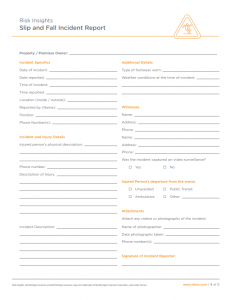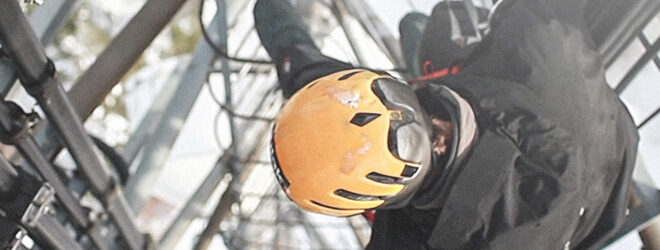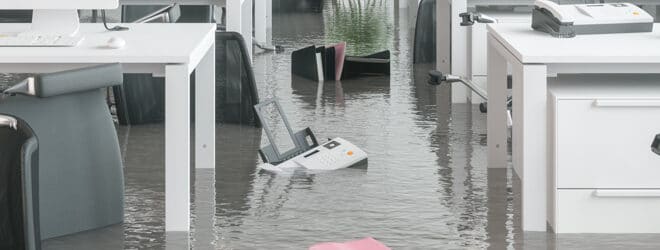Summer’s around the bend, which means you can finally tuck the shovel and salt away. But just because ice and snow are (hopefully) no longer immediate dangers, don’t assume your employees, customers, vendors, or other visitors won’t suffer a slip, trip, and fall on your property that lands your company in legal trouble and facing a time-consuming claims process (though we can help you through that).
In fact, a 2015 report found that preventable accidents are a leading cause of injury in Canada, and in 2016 there were 11,495 lost-time injury claims in Ontario alone that resulted from falls. Those are concerning statistics, especially when you run a business that sees many people come and go each day – and just one bad accident could bring a costly personal injury claim against you.
The type and extent of your risk management will certainly depend on the type and size of your business, but there are some areas that most businesses should consider, no matter the nature of the building or the time of year. Fortunately, you’ll find a free template below that can help you track all the crucial elements of a slip, trip, and fall incident, helping you stay one step ahead.
Lighting
When you try to navigate a path or hallway in the dark, you’re bound to bump up against something. Don’t make it harder on your visitors by neglecting to light their way! Check your lights outside to make sure they’re all in good working order, and if you keep a box of spare bulbs in a closet or stockroom, you’ll have an easy fix when you need it.
Is there an opportunity to make things a bit brighter? Take a walk inside and outside your workplace at night to get a feel for particularly dark corners, passageways, or thresholds. While you’re at it, you could check that your glowing exit signs are working properly, too!
Click here for your incident reporting template!
Surfaces
Spaces with uneven surfaces are begging for trouble, especially those in high-traffic areas. Both indoor and outdoor areas need your attention, especially when the weather takes a turn for the worse, or if you work with anything that could spill, clutter, or otherwise affect easy movement through your workspace.
When assessing the property outside your building, you can look for things like:
- Downspouts that drain water into parking lots or onto sidewalks. Water can make for annoying puddles – or worse, slippery surfaces that surprise your visitors.
- Cracks, debris, potholes, and other problems on your parking lot surface. These can damage cars, but also catch shoes, ankles, or canes to cause a nasty fall.
- Stairways in need of a facelift. Crumbling concrete is a clear problem, but so is a too-smooth surface: do what you can to make sure your stairways and walkways are slip-resistant.
- Bumps, covers, drains, ramps, and thresholds. Any feature that sticks up or interrupts the usual landscape can be a tripping hazard, so inspect your space closely and consider marking any changes in elevation or texture with non-slip material and high-contrast paint.
- Clean up spills and indicate where they happened. “Wet floor” signs may not be the most exciting aesthetic, but they’re important accessories for any workplace to keep on hand.
- Make sure tiles, carpet, and other floor coverings stay put – when boards or corners start to come up, repairs should be your top priority
In 2016 there were 11,495 lost-time injury claims in Ontario alone that resulted from falls.
Entrances
How do your patrons get in and out of your building? Does an automatic door glide open to reveal a wide and clear hallway? Or must your customers fight with boxes, vases, curtains, or other clutter to get to your goods? Entrances and exits aren’t only your first and last chances to make a good impression, they could also be dangerous spaces that lead to legal trouble.
The first step is to clear away anything that doesn’t need to be there. Worried that a sparse and sterile entryway may not be very welcoming to customers? Think about hanging up some art or posters, or you can paint the walls to brighten things up. Then, commit to keeping the space clean and dry.
Furniture
Tables and chairs need to be sturdy and intact – but so should display cases, service counters, and any other furnishings that are meant to hold products (or your customers). If it’s been awhile since you took a close look at your furnishings, take a moment to check for broken parts, splinters, sharp edges, or protruding nails. Furniture that’s in good condition is less likely to painfully intercept a customer or buckle under their weight.
Observe and record
Routines can be difficult to start, but soon enough they become second nature. Make inspection a part of your daily routine and get a good recording process in place to make sure nothing falls victim to communication breakdown. Here are some tips:
- Check all primary areas regularly, from the parking lot and entranceway to shelves and displays.
- Commit to cleaning at a given time each day (preferably after you close up shop for the day).
- Consider putting one employee or a small team on certain maintenance duties, so they get to know the job well and are less likely to pass over a problem or task.
- Keep a log book to document all maintenance activities. This master record is a helpful resource for your staff to stick to procedure, and it can be crucial evidence if a claim is brought against your business.
When accidents happen, the right report can help save the day
Even the most cautious business owner can’t control everything all the time. Sometimes slips and falls happen, and when they do, the speed and nature of your emergency response can make a big difference in how your business handles the consequences.
If you have a commercial general liability insurance policy in place, you can count on professional support if a claim should arise. However, you’ll also need a solid plan that can help you spring into action as soon as the incident happens – this is where you can include witness testimony, photos of the scene, and details of the claimant. Download our Slip and Fall Incident Report template so you can gather the info you need, when you need it!





